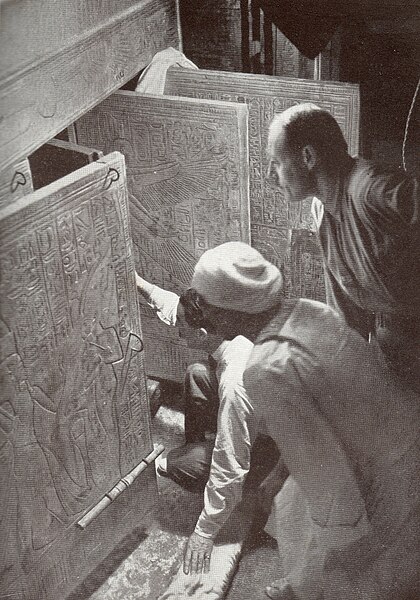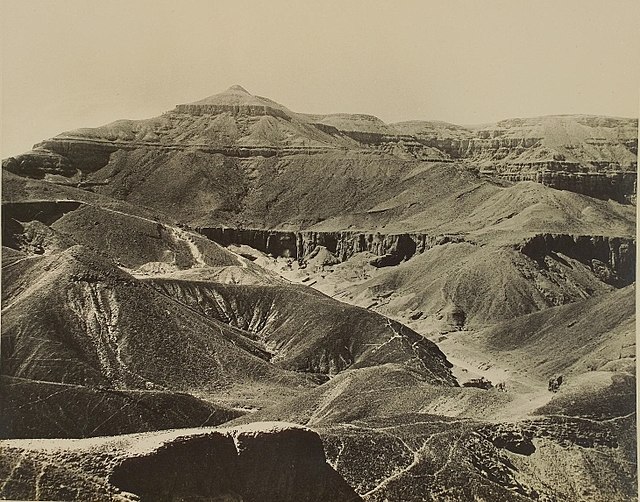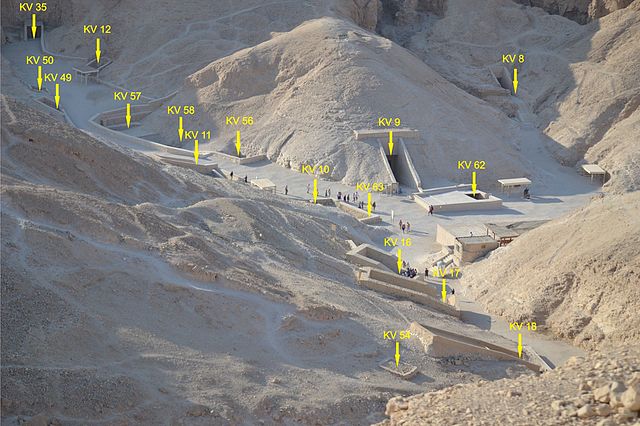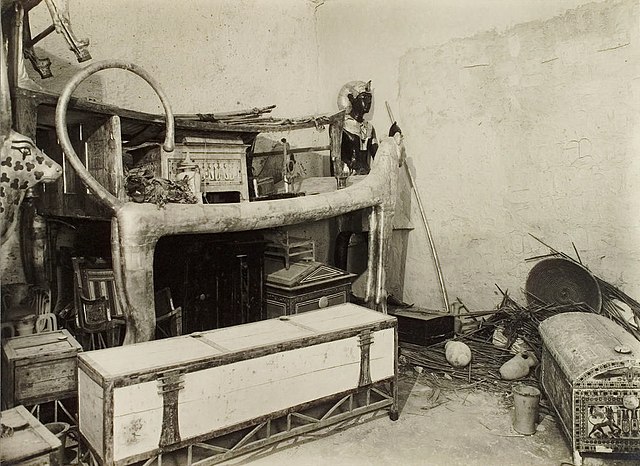Discovery of the tomb of Tutankhamun
The tomb of Tutankhamun was discovered in the Valley of the Kings in 1922 by excavators led by the Egyptologist Howard Carter, more than 3,300 years after Tutankhamun's death and burial. Whereas the tombs of most pharaohs were plundered by graverobbers in ancient times, Tutankhamun's tomb was hidden by debris for most of its existence and therefore not extensively robbed. It thus became the first known largely intact royal burial from ancient Egypt.
Howard Carter (squatting), Arthur Callender and an Egyptian workman, looking into the opened shrines enclosing Tutankhamun's sarcophagus in 1924
The Valley of the Kings in 1922. The tomb of Tutankhamun lies near the central path through the valley, at centre right.
Lord Carnarvon at Howard Carter's house in Egypt, c. 1922
View of the southwest corner of the antechamber, with disassembled chariots on the left and furniture on the right. The entrance to the annexe is beneath the funerary bed to the right of centre.
The tomb of Tutankhamun, also known by its tomb number, KV62, is the burial place of Tutankhamun, a pharaoh of the Eighteenth Dynasty of ancient Egypt, in the Valley of the Kings. The tomb consists of four chambers and an entrance staircase and corridor. It is smaller and less extensively decorated than other Egyptian royal tombs of its time, and it probably originated as a tomb for a non-royal individual that was adapted for Tutankhamun's use after his premature death. Like other pharaohs, Tutankhamun was buried with a wide variety of funerary objects and personal possessions, such as coffins, furniture, clothing and jewelry, though in the unusually limited space these goods had to be densely packed. Robbers entered the tomb twice in the years immediately following the burial, but Tutankhamun's mummy and most of the burial goods remained intact. The tomb's low position, dug into the floor of the valley, allowed its entrance to be hidden by debris deposited by flooding and tomb construction. Thus, unlike other tombs in the valley, it was not stripped of its valuables during the Third Intermediate Period.

The wall decorations in KV62's burial chamber are modest in comparison with other royaltombs found in the Valley of the Kings.
The central portion of the Valley of the Kings in 2012, with tomb entrances labeled. The covered entrance to KV62 is at centre right.
The northwest corner of the antechamber, as photographed in 1922. The plaster partition between the antechamber and burial chamber is on the right.
Workmen move goods from the tomb along a Decauville railroad track to the Nile.








